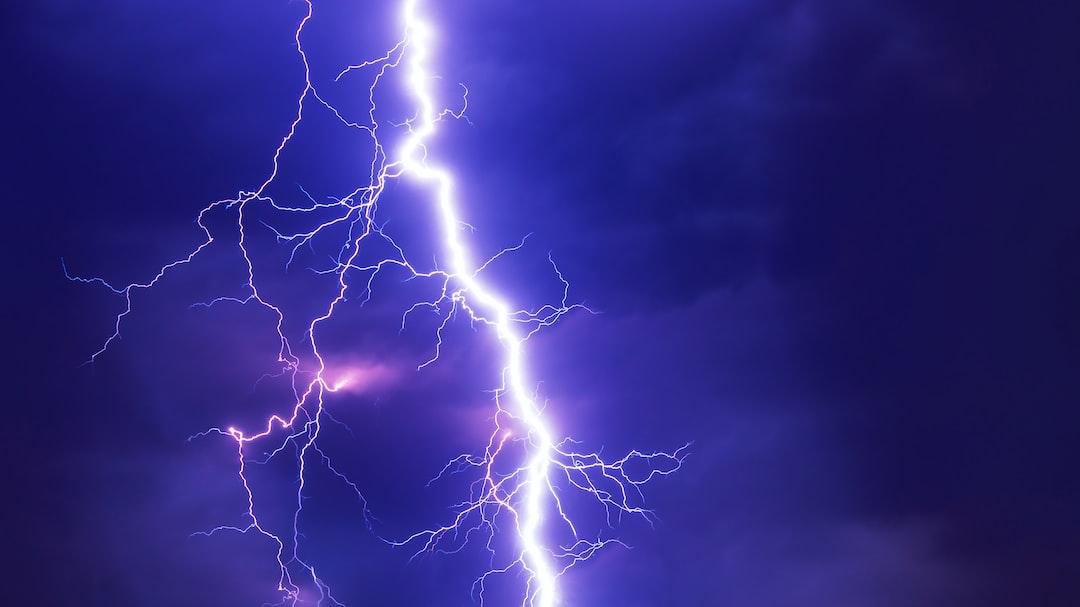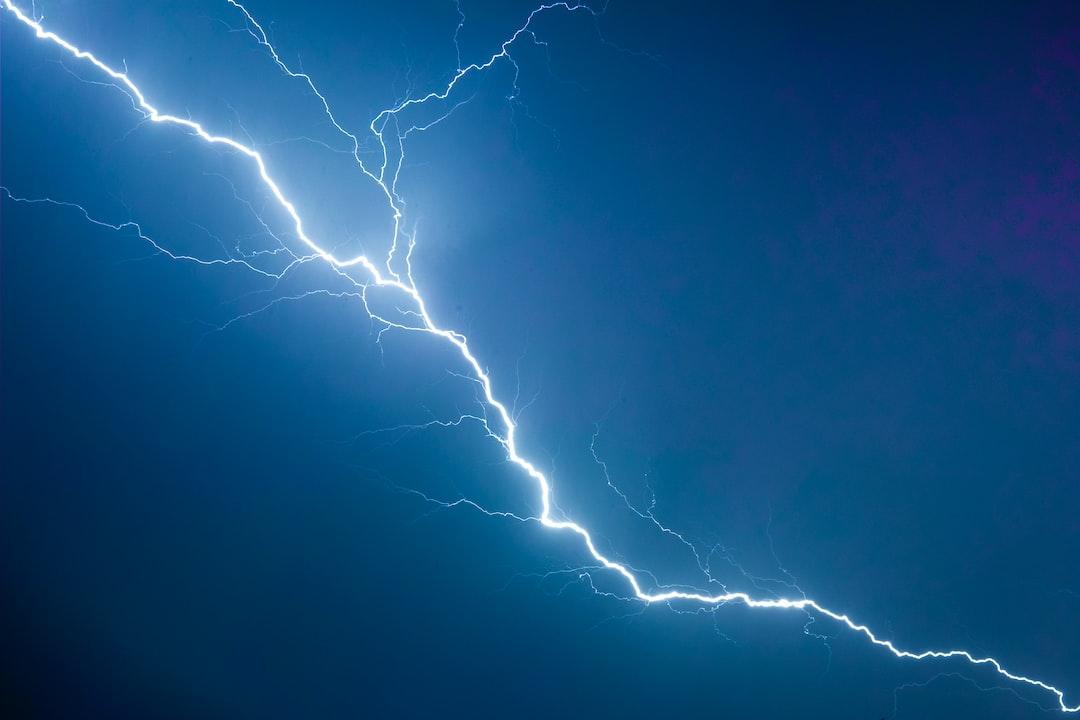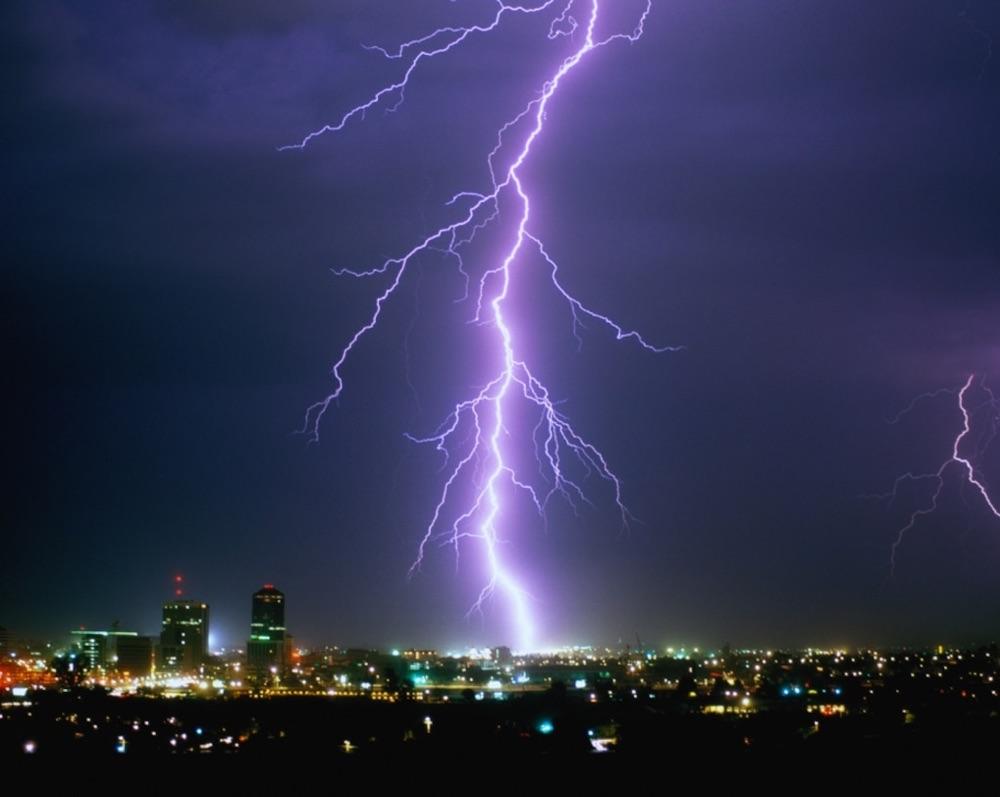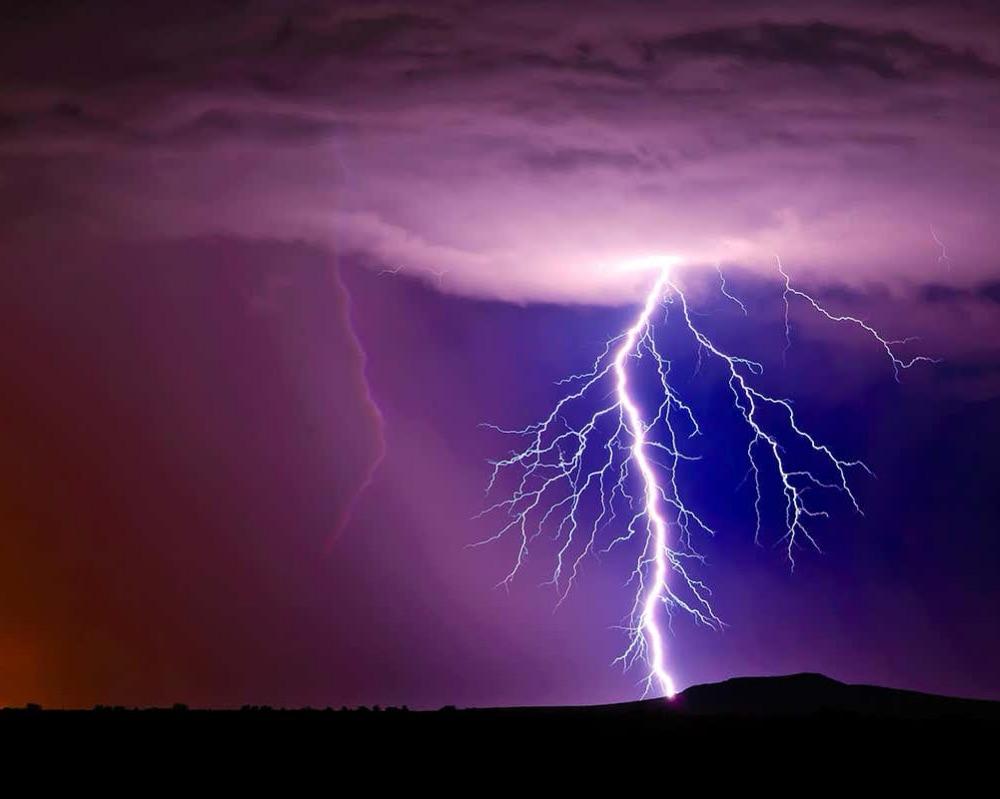Explore the World's Best Ideas
Join today and uncover 100+ curated journeys from 50+ topics. Unlock access to our mobile app with extensive features.
Lightning
There are about 25 million lightning strikes each year over the US. Several scientific explanations exist for the cause of lightning, each having merit in the context of each study. What we do know is that under calm skies, the electric charge ( +Charges & -Charges) are evenly distributed and the atmosphere can be thought of as being of a neutral charge. Inside thunderstorms, however, particularly in mixed clouds where ice and water are present, ice appears to be a key factor in the development of lightning.
8
176 reads
Lightning
Ice particles collide with other particles and 'rub off' electrostatic charges, causing a separation of charge within the cloud. Positively charged ice crystals concentrate toward the top of the cloud and negatively charged particles and hail stones drop through to the lower parts. Thus, the thunderstorm's +Charges and -Charges become separated into two levels: +Charge at the top and -Charge at the bottom.
9
146 reads
Lightning
Over time the charges build up and once the -Charge (at the bottom) is sufficient to overcome the electrical resistance of the air, a flow of -Charge is initiated toward the earth. This is known as a Stepped Leader , and, if visible, looks like splintered forks .
8
131 reads
Lightning
This build up of charge in the cloud induces in the surrounding ground, a flow of positive charge onto the surface of objects like trees, buildings, and even people. Again, a situation of separation of charges develops. These induced +Charges at the surface of the Earth build and become attracted to this stepped leader. When sufficient dielectric charge has built up, a sudden (and massive) flow of +Charge moves up to the Stepped Leader and the familiar lightning strike is seen.
8
111 reads
Lightning
This movement of charge from the ground back up to the cloud is known as the Return Stroke. This is the one most visible to the eye and is generally accompanied by a clap of thunder.
8
110 reads
4-Steps of Lightning
Step 1: A Stepped Leader is created at the base of the cloud and serves as a channel through which electrons in the cloud can travel to the ground. The Stepped Leader is not always visible to the human eye. It can sometimes be heard as a crackling sound.
8
96 reads
4-Steps of Lightning
Step 2: The Stepped Leader signals a building of charge within a cloud. There may well be many attempts of Stepped Leaders to seek a good contact with a ground object and the sky may be filled with these splintered fork-like flashes for some time, and a crackling sound. These flashes are attempts to discharge the clouds electrical intensities. They also induce in the underlying ground a build-up of opposite (+Charge) electrical energy. When sufficient charge has built up and the Leader approaching ever closer to a ground object, a contact is made and a massive discharge occurs.
8
78 reads
4-Steps of Lightning
Step 3: The Return Stroke is this movement of charge from the surface object back up into the cloud using the channel of the Stepped Leader as its pathway. This occurs with a deafening bang as the lightning heated air (27,000°F) effectively explodes with the sound of thunder.
9
73 reads
4-Steps of Lightning
Step 4: With the connecting of the Stepped Leader and the Return Stroke, electrons from the cloud flow to the ground, while positive charges from the ground discharge into the cloud. The flow of currents from the cloud to the ground now becomes visible with the Return Stroke. What is not visible to the eye is that there are many discharge strikes taking place within and during each lightning stroke. These are taking place in fractions of a second - too fast for our eye to register as individual strokes.
8
67 reads
4-Steps of Lightning
After the first discharge, it is possible for another stepped leader to propagate down the established channel created by the first Stepped Leader. These new Leaders are sometimes called Dart Leaders. A subsequent Return Stroke propagates upward from the ground to the cloud. This process can happen several times in very rapid succession.
8
64 reads
4-Steps of Lightning
It is also common for lightning to strike again and again in the same location; as long as the same conditions that attract a lightning bolt to hit initially are still in place - a lone tree on a hill; a tall TV tower, etc. are examples of attractive lightning targets.
8
62 reads
Ground Strikes of Lightning
Cloud-to-Ground Lightning is the discharge that occurs between cloud and ground initiated by a downward moving stepped leader.
8
72 reads
Ground Strikes of Lightning
Ground-to-Cloud Lightning (also known as Upward Moving Lightning) is a discharge between cloud and ground but initiated by an upward moving stepped leader originating from an object on the ground. This most often occurs where there are tall towers, skyscrapers and sometimes lone trees.
8
65 reads
Ground Strikes of Lightning
Intracloud Flash Lightning
(AKA Sheet Lightning, Anvil Crawlers, Heat Lightning)
8
70 reads
Ground Strikes of Lightning
Intracloud Flash Lightning is the most common form of lightning and occurs within a cloud, or from one cloud to an adjacent cloud. All or parts of the actual lighting strokes may be obscured within the cloud(s) and may not be visible to an observer on the ground.
8
62 reads
Ground Strikes of Lightning
Heat lightning is a name sometimes used for in-cloud lightning. It may occur as faint flashes of lightning seen from a distant that is not accompanied by any sounds of thunder. Heat lighting is sometimes mistakenly thought to be caused by hot air expanding until it sparks on sultry summer nights. This is not so. ALL lightning is actually 'heat' lightning in that the temperature of lightning is around 27,000°F. When this passes down or along a channel up to 5 inches in diameter, it explodes the air in this channel, and this explosive sound is Thunder.
9
63 reads
Ground Strikes of Lightning
Another description of lightning often heard is Sheet Lightning. This is nothing new, but describes a lightning flash whose light is reflected off cumulonimbus cloud towers and becomes diffused as it passes through the atmosphere and thus loses its distinctive bolt pattern.
8
65 reads
IDEAS CURATED BY
Founder of GHOST X | GFX: Commissions | Gamer | Powered by: @therogueenergy @gamestop | #razerstreamer | TBD: @gfuelenergy Cashapp: $AmnesianGaming21 Venmo: @Nitro-Gaming
Similar ideas
1 idea
10 ideas
10 Interesting Facts About Dreams
verywellmind.com
Read & Learn
20x Faster
without
deepstash
with
deepstash
with
deepstash
Personalized microlearning
—
100+ Learning Journeys
—
Access to 200,000+ ideas
—
Access to the mobile app
—
Unlimited idea saving
—
—
Unlimited history
—
—
Unlimited listening to ideas
—
—
Downloading & offline access
—
—
Supercharge your mind with one idea per day
Enter your email and spend 1 minute every day to learn something new.
I agree to receive email updates

















